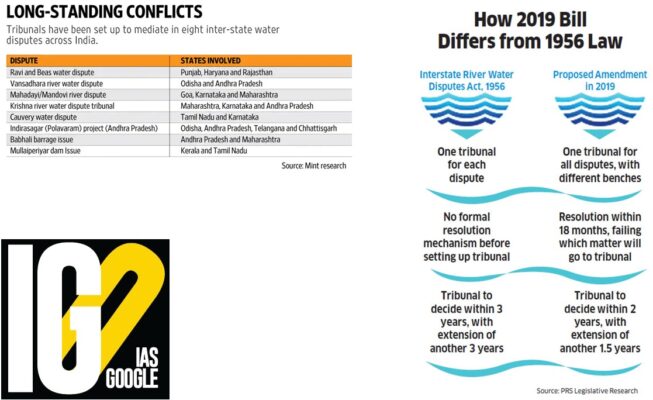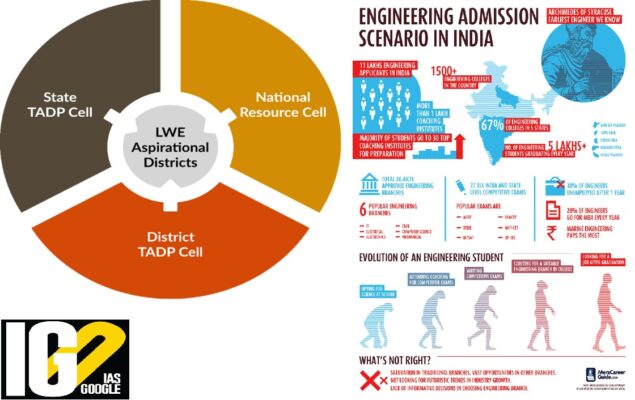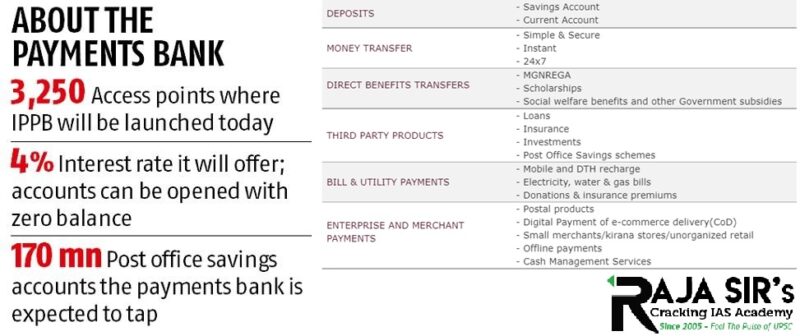- Home
- Prelims
- Mains
- Current Affairs
- Study Materials
- Test Series
 EDITORIALS & ARTICLES
EDITORIALS & ARTICLES
Jan 19, 2022
RUBIN MUSEUM TO RETURN NEPALESE RELICS THOUGHT TO HAVE BEEN STOLEN.
Rubin Museum will return Nepalese relics thought to have been stolen, one relic being the upper section of a 17th century wooden torana form a temple complex in Patan called the Yampi Mahavihara.

 Inter-State River Water Disputes Act, 1956
Inter-State River Water Disputes Act, 1956

 Genesis:
Genesis:


 World Employment and Social Outlook Trends (WESO Trends) 2022:
World Employment and Social Outlook Trends (WESO Trends) 2022:
 Yellow Revolution:
Yellow Revolution:
 India Post Payments Bank (IPPB):
India Post Payments Bank (IPPB):

- Torana is a free-standing ornamental or arched gateway for ceremonial purposes.
- It is seen in the Hindu, Buddhist and Jain architecture of the Indian subcontinent, Southeast Asia and parts of East Asia.
- It is also referred to as Vandanamalikas.
 Inter-State River Water Disputes Act, 1956
Inter-State River Water Disputes Act, 1956
- The Interstate River Water Disputes Act, 1956 (IRWD Act) is an Act of the Parliament of India enacted under Article 262of Constitution of India.
- Article 262(1) provides that Parliament may adopt legislation for the settlement of disputes or complaints concerning the use, distribution or control of transboundary waters in a river or river valley.
- The Act provides for the adjudication of disputes relating to waters of inter-state rivers and river valleys.
- The Act empowers Central government to set up a Tribunal for dispute resolution on the request of a state government.
- The Tribunal must give its decision within three years, which may be extended by two years.
- The decision of the Tribunal must be published by the central government in the official gazette.
- The central government maintains a data bank and information system at the national level for each river basin.
- Limited role of Centre:
- The centre can act on the dispute, only on the request of the state.
- A state cannot directly approach the tribunal:
- The state has to request the Centre to refer an interstate river dispute to a tribunal.
- Delays in the procedures:
- The multiplicity of tribunals has led to an increase in bureaucratic delays, and possible duplication of work.
- Thus, there is a dire need for speedy disposal of such disputes with a permanent institutional mechanism.
- Disenchantment with provisions:
- There is no time limit for publishing the reports, and the states have no remedy.
- The unsatisfactory adjudication leads to exaggerated claims by both the dispute parties.
- The existing provisions do not rule out recourse to negotiations, or mediation or reconciliation.
- There is no provision to ensure that an award once given is duly implemented.
- Lack of legal provisions in the Act has resulted in the creation of more disputes.
- The Inter-State River Water Disputes (Amendment) Bill, 2019 amends the Inter-State River Water Disputes Act, 1956.
- The bill provides for the setting up of a Disputes Resolution Committee (DRC)to resolve the dispute amicably.
- The states concerned would be encouraged to come to a negotiated settlement through a Disputes Resolution Committee (DRC).
- The central government will set up an Inter-State River Water Disputes Tribunal, for the adjudication of water disputes.
- It binds the Centre to set up DRC to amicably resolve the issue by negotiations in one year.
- The Bill provides that the central government will appoint or authorise an agency to maintain data bank.

- It was illegally removed from a temple in Lokhari, Banda, Uttar Pradesh in sometimes the 1980s and traded in the markets of London (UK).
- Yoginis are powerful female divinities associated with the Tantrik mode of worship.
- Often, they are believed to have 64 appearances or Group of 64 Yoginis, having infinite powers.
- The Goat Head Yogini is one of the 64 Yoginis.
 Genesis:
Genesis:
- In 2019, IIT-Hyderabad had advised the government to put a moratorium on granting approvals to new engineering colleges for two years, starting 2020.
- Government of India launched the ‘Transformation of Aspirational Districts’ initiative in 2018.
- Aim: To improve India's ranking under Human Development Index, raising living standards of its citizens and ensuring inclusive growth of all.
- A total of 117 Aspirational districts have been identified by NITI Aayog.
- Convergence of scheme resources implemented with Left Wing Extremism (LWE) funds.
- Real-time progress tracking of the district plans.
- Coordinated efforts, community action, and other development interventions.
- Integrated support from Central Ministries, State Governments, and District Administrations.
- Focus Area: Health & Nutrition (30%), Education (30%), Agriculture & Water Resources (20%), Financial Inclusion & Skill Development (10%), and Basic Infrastructure (10%).

- At the event, the MoHUA also launched Season-2 of India Cycles4Change and Streets for People Challenges.
- Both the Streets for People Challenge and the Nurturing Neighbourhoods Challenge are the competition between Smart cities under the Smart Cities Mission (SCM).
- SCM was launched in 2020, since then these challenges are being conducted among the selected smart cities, in a phase-wise manner.
- It is a challenge for a paradigm shift from car-centric roads to people-centric streets, by prioritizing them for pedestrians.
- The National Urban Transport Policy, 2006also has a similar vision.
- The challenge was conducted with technical support from the Institute for Transportation and Development Policy (ITDP India).
- Winner cities will be awarded Rs. 50 lakhs each by MoHUA.
- MoHUA announced winner cities for this challenge in collaboration with the Bernard van Leer Foundation (BvLF) and technical partner World Resources Institute (WRI) India.
- The Challenge is a 3-year phased initiative aimed at shaping early childhood-friendly neighborhoods in Indian cities.
- Under it, included activities are: Creation of public spaces in slums, age-appropriate play areas, enhanced outdoor waiting spaces around primary health centers and anganwadis, amenities for caregivers etc.

- SC asked the Union government to prepare a model to implement the Community Kitchen scheme across the country and for providing additional food grains to states to run it.
- A Community Kitchen is a group of people who meet on a regular basis to plan, cook and share healthy, affordable meals.
- National Nutrition Mission (NNM) or the POSHAN Abhiyaan, was launched on International Women’s Day 2018.
- It targets children, pregnant women and lactating mothers, aiming to reduce stunting, undernutrition, anemia and low birth weight babies.
- Stunting: It is defined as low height-for-age. It is the result of chronic or recurrent undernutrition. In 2019-21, 35.5% of children below five years were stunted.
- Undernutrition: It is a deficiency of calories or of one or more essential nutrients.
- Anemia: It is a condition in which person lack enough healthy red blood cells to carry adequate oxygen to body's tissues. Females (54.6%) were more anaemic than males (45.1%).
- low birth weight: It is used to describe babies who are born weighing less than 5 pounds, 8 ounces (2,500 grams).
- It uses Lives Saved Tool, also known as LiST, to gather results on increased interventions of maternal, newborn and child health, and nutrition.
- NNM targets to reduce stunting, under- nutrition, anemia (among young children, women and adolescent girls) and reduce low birth weight by 2%, 2%, 3% and 2% per annum respectively.
- National Development Council launched the National Food Security Mission in 2007.
- Aim: To increase the production of rice, wheat and pulses through:
- Area expansion and productivity enhancement.
- Restoring soil fertility and productivity
- Creating employment opportunities
- Enhancing farm level economy.
- Programme in India began in 2017 to improve agriculture, health and nutrition.
- Programme Focused on Developing farm equipment, revamping the farming system, setting up genetic gardens for biofortified plants and beginning zero hunger training.
- Aim:
- Decrease child stunting for children 2 years and younger
- Ensure access to food all year round
- Create stable food systems
- Increase small farmer productivity and income
- Eliminate food waste
- It is started by The Food Safety and Standards Authority of India.
- The program stands on the foundation of regulatory capacity building, collaborative and empowerment approach.
- Aim: to encourage communities to eat healthy, safe and sustainably.
- Food fortification is a process of nutrient supplementation chemically, biologically or physically.
- In India, food fortification began in the 1950s with vegetable oil fortification and salt iodization.
- In the 2000s, the government introduced fortification of other commodities such as rice and wheat.
- Under these, five kilograms of food grains were provided per person per month to around 800 million beneficiaries.
- In addition to food grains, one kg of pulses has been provided to 194 million households per month for the period April to November 2020.
- The government provided about 800 thousand tonnes of additional food grains to migrants / stranded migrants.
- Each person received five kg grain per month during May and June 2020.
- India ranks 101st out of the 116 countries in 2021.
- Prepared annually by Concern Worldwide and Welthungerhilfe.
- India is among the 47 countries most likely to not reach the zero-hunger goal.
- GHI score decreased to 27.5 in 2021 from 38.8 points in 2000.
- However, India has the highest child wasting in the world that affects 17.3 per cent of its children.
- The proportion of undernourished in the population and the under-five child mortality rate are now at relatively low levels.
 World Employment and Social Outlook Trends (WESO Trends) 2022:
World Employment and Social Outlook Trends (WESO Trends) 2022:
- WESO Trends is a comprehensive study on employment data of the world.
- The report provides detailed labor market estimates for 2022 and 2023.
- Global unemployment rate to remain above pre-Covid-19 levels until at least 2023.
- For the year 2022, the unemployment level is estimated at 207 million.
- It was around 186 million in 2019. (Around 1.2% difference)
- The European and North American nations are recovering well.
- But, regions of Southeast Asia, Latin America, and the Caribbean have shown lenient recovery.
- At the national level, high-income Nations are faring the best, while lower-middle-income Nations are faring the worst.
- In 2022, the employment-to-population ratio is estimated to be 55.9%. This is 4% below the 2019 level.
- During 2019 and 2020, the global labor force participation rate has fallen by 2%. It is projected to recover only partially to just below 59.3% by 2022.
- In 2022, there will be a working-hour deficit equivalent to 52 million full-time jobs.
- Rebuilding the economy to address systemic and structural inequalities. It also includes a sustainable developmental approach.
- Implementation of four pillars through Fiscal Policy: inclusive economic growth and development; protection of all workers; universal social protection; and social dialogue.
- Capacities of public administrations and employers’ and workers’ organizations to participate in Social dialogue are required to be strengthened.
- Established: 1919 (187 members)
- Headquarters: Geneva, Switzerland
- Objective: Labor Empowerment
- ILO is the first and oldest Specialized Agency of the United Nations (UN).
- ILO brings together governments, employers, and workers. ILO is working in the field of labor empowerment. For this, it has framed International Labor Standards.
- World Employment and Social Outlook
- World Employment and Social Outlook: Trends
- World Social Protection Report
- Global Wage Report
- Out of these 8, India has ratified 6 ILO conventions.
- The remaining two unratified conventions include:
- Freedom of Association and Protection of the Right to Organise Convention, 1948 (No. 87)
- Right to Organise and Collective Bargaining Convention, 1949 (No. 98).
 Yellow Revolution:
Yellow Revolution:
- The revolution launched in 1986- 1987.
- Aim: To increase the production of edible oil, especially mustard and sesame seeds to achieve self-reliance.
- Yellow Revolution targets nine oilseeds that are groundnut, mustard, soybean, safflower, sesame, sunflower, niger, linseed and castor.
- India came up with the Oil Technological Mission in 1986 to ensure success for yellow revolution.
- Farmers were given facilities like fertilizers and pesticides for the crops, as well as irrigation etc.
- Other facilities included the transportation facility and storage. This was required to make the revolution successful.
- Boards such as the National Dairy Board (NDB)were given many important responsibilities to enhance the production of oilseed.
- The NDB took the responsibility to increase the production of groundnut oil in Gujarat.
- National Oilseeds and Vegetable Oils Development Board was setup to enhance the production of oilseeds in other areas as well.
- Oilseeds Production Trust came in India to boost the production of the four oilseeds, mainly, mustard, groundnut, soybean, and sunflower.
- The Yellow revolution had the implantation of hybrid mustard and sesame seeds which significantly increased the production of edible oil.
- There was use of improved technology for oil production.
- The Revolution gave rise to a new era with blooming sunflowers in the state of Punjab.
- The mustard plant is an important oilseed crop of India.
- Mustard seed is used as a spice.
- Mustard seeds are a rich source of oil and protein.
- Mature mustard plants grow into shrubs.
- Mustard seeds generally take eight to ten days to germinate if placed under the proper conditions.
- Yellow mustard has a plant maturity of 85 to 90 days.
- Mustard grows well in temperate regions.
- It requires temperatures between 10°C to 25°C.
- The mustard crop is produced in the areas receiving 625 -1000 mm annual rainfall.
- Mustard farm does not tolerate freeze, so it requires a clear sky with frost-free conditions.
- Mustard plantations relatively require moist soil.
- It can be raised in wide varieties of soils that range from light to heavy loamy soils.
 India Post Payments Bank (IPPB):
India Post Payments Bank (IPPB):
- It has been established under the Department of Posts, Ministry of Communication by with 100% equity owned by Government of India.
- Launched in: 2018.
- Aim: To build the most accessible, affordable and trusted bank for the common man in India.
- Mandate: To remove barriers for the unbanked and under-banked and reach the last mile leveraging the postal network.
- While opening a bank account in the bank one can choose from three types options: Regular Account or 'Safal', Basic Savings Bank Deposit Account (BSBDA) or 'Sugam', and BSBDA Small or 'Saral'.
- All three are zero balance accounts (they do not require the bank account holder to maintain any specific balance every month).
- It provides paperless and cashless banking services in a simple and secure manner to the customers.
- It delivers affordable banking solutions through intuitive interfaces available in 13 languages.
- Account: The bank offers savings and current accounts up to a balance of ₹1 Lakh.
- QR Card: Customers can use QR code payments eliminating the need to remember account numbers, PINs and passwords.
- Unified Payments Interface
- Immediate Payment Service
- National Electronic Funds Transfer
- Real-time gross settlement
- Bharat BillPay
- Direct Benefit Transfer
- RuPay Debit Card
- AEPS (Aadhaar Enabled Payment Service)









 Latest News
Latest News General Studies
General Studies